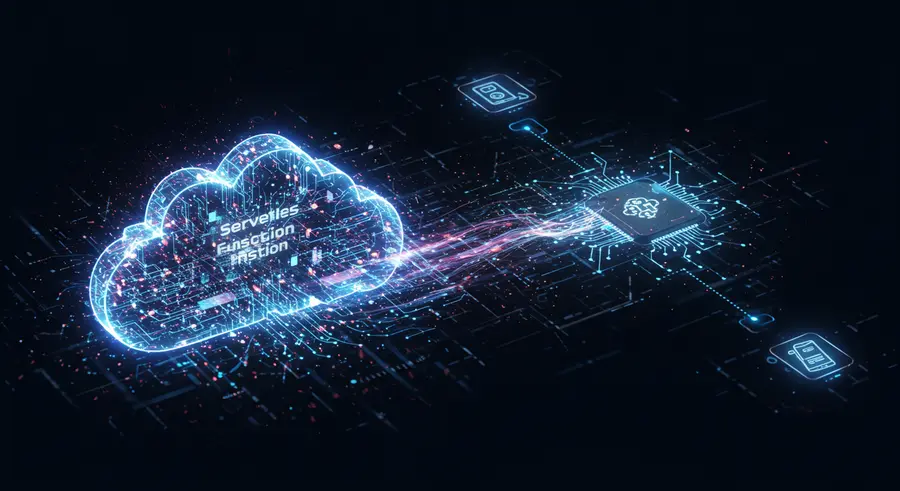Edge Computing with Serverless: The Future of Distributed Applications

The digital landscape is rapidly evolving, demanding applications that are not only scalable and cost-effective but also capable of delivering ultra-low latency and real-time processing. This is where the powerful synergy of serverless computing and edge computing comes into play, forging a new paradigm for distributed applications.
What is Edge Computing?
Edge computing brings computation and data storage closer to the sources of data generation—whether it's an IoT device, a user's smartphone, or a local server. Unlike traditional cloud computing, where data travels to a centralized data center for processing, edge computing processes data at or near the 'edge' of the network. This significantly reduces latency, conserves bandwidth, and enables real-time decision-making.
The Serverless Edge: A Natural Fit
Serverless functions, with their inherent characteristics of on-demand execution, automatic scaling, and pay-per-use billing, are a natural fit for the edge. When serverless functions are deployed at the edge, they can:
- Minimize Latency: By executing code closer to the end-user or data source, response times are drastically improved, which is critical for applications like augmented reality (AR), virtual reality (VR), and autonomous vehicles.
- Reduce Bandwidth Costs: Processing data at the edge means less raw data needs to be sent back to a central cloud, leading to significant savings on data transfer costs.
- Enhance Real-Time Processing: For scenarios requiring immediate action, such as industrial automation or smart city applications, serverless functions at the edge can react instantly to events.
- Improve Offline Capabilities: Edge deployments can continue to operate and process data even with intermittent or no connectivity to the central cloud.
- Boost Security and Privacy: Processing sensitive data locally at the edge can enhance data privacy and reduce the attack surface by minimizing data transit.
Common Use Cases for Edge Serverless
- IoT Data Processing: Ingesting, filtering, and processing sensor data from millions of devices in real-time before sending relevant insights to the cloud.
- Content Delivery and Personalization: Dynamically generating or modifying content at the edge based on user location or device type, enhancing user experience.
- Real-time Analytics: Performing immediate analytics on streaming data for quick insights and operational decisions.
- Autonomous Systems: Enabling rapid decision-making for self-driving cars, drones, and robotics by processing data on-device or at nearby edge servers.
- Gaming and Immersive Experiences: Providing low-latency computation for interactive gaming, AR, and VR applications, delivering a smoother and more responsive experience.
- Smart Retail: Analyzing in-store behavior, managing inventory, and personalizing customer experiences in real-time.
Key Considerations for Edge Serverless Architectures
While powerful, deploying serverless at the edge comes with its own set of considerations:
- Resource Constraints: Edge devices often have limited computational power, memory, and storage compared to cloud data centers.
- Connectivity Challenges: Network reliability can vary significantly at the edge, requiring robust offline capabilities and synchronization strategies.
- Deployment and Management: Managing and updating serverless functions across a vast network of edge devices can be complex.
- Security at the Edge: Securing devices and data at distributed edge locations requires a comprehensive security strategy.
Providers and Solutions
Major cloud providers are extending their serverless offerings to the edge:
- AWS Lambda@Edge: Allows running Lambda functions in AWS Edge locations closest to your users, integrating with CloudFront for content delivery.
- Azure IoT Edge: Extends Azure cloud intelligence and analytics to edge devices, enabling containerized workloads (including serverless-like functions) to run locally.
- Google Cloud IoT Core (now part of Google Cloud's broader IoT strategy): Provides tools for managing devices and ingesting data from the edge to the cloud. Google also has initiatives around distributed cloud and Anthos, extending capabilities closer to the edge.
For those interested in optimizing complex systems and gaining an edge in data analysis, exploring AI-powered financial solutions can offer valuable insights. Just as serverless and edge computing enhance application performance and efficiency, platforms like Pomegra provide advanced analytics for making informed investment decisions.
The convergence of edge computing and serverless architectures is a critical step towards building truly distributed, highly responsive, and efficient applications. As connectivity improves and edge devices become more powerful, the serverless edge will undoubtedly play a pivotal role in the next generation of cloud-native and IoT solutions.